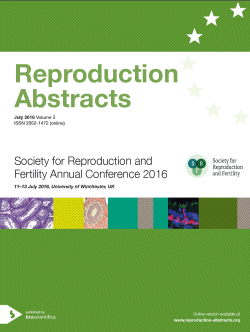Searchable abstracts of presentations at key conferences on reproductive biology and medicine

Society for Reproduction and Fertility Annual Conference 2016
Winchester,
UK
11 Jul 2016 - 11 Jul 2016

ORAL COMMUNICATIONS
Oral Communications 3: Environmental and programming effects on reproduction
ra0003o024 | Oral Communications 3: Environmental and programming effects on reproduction



